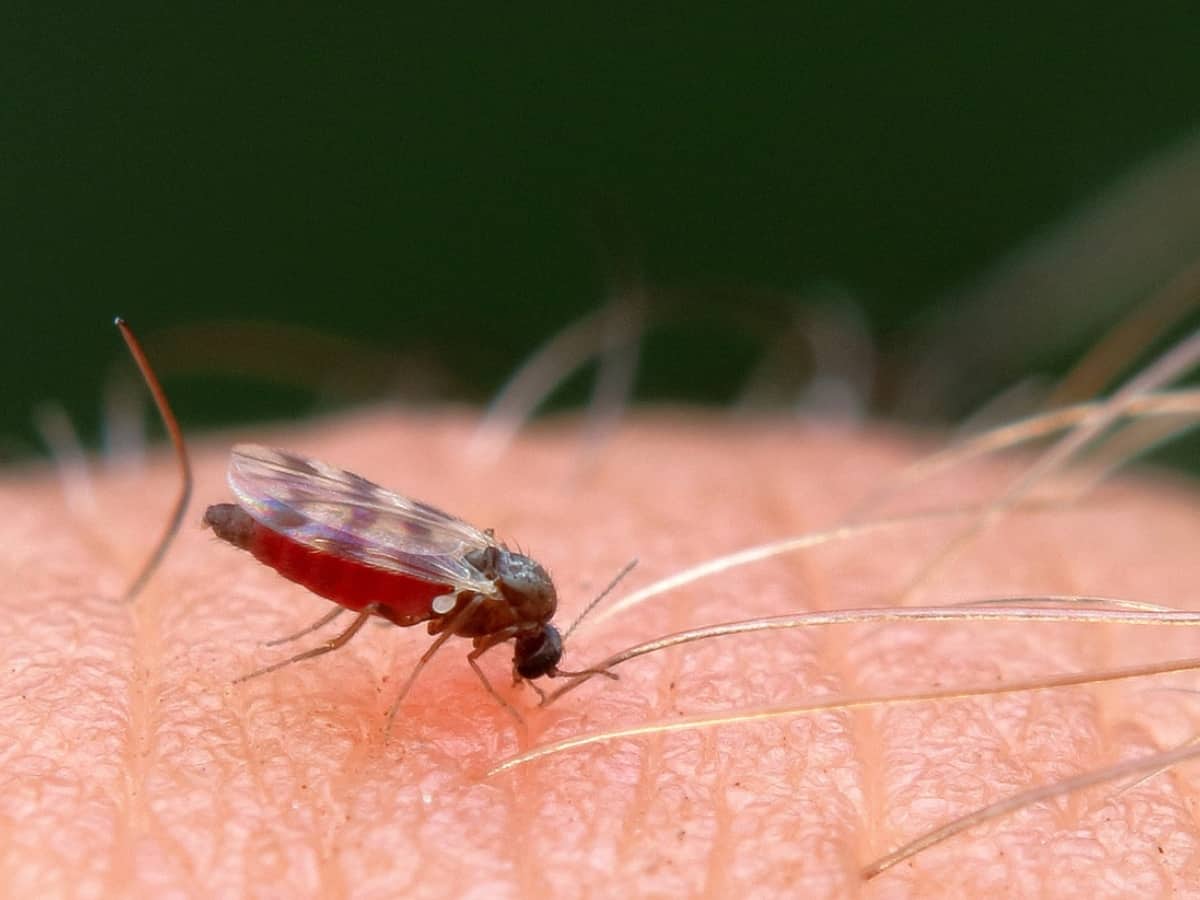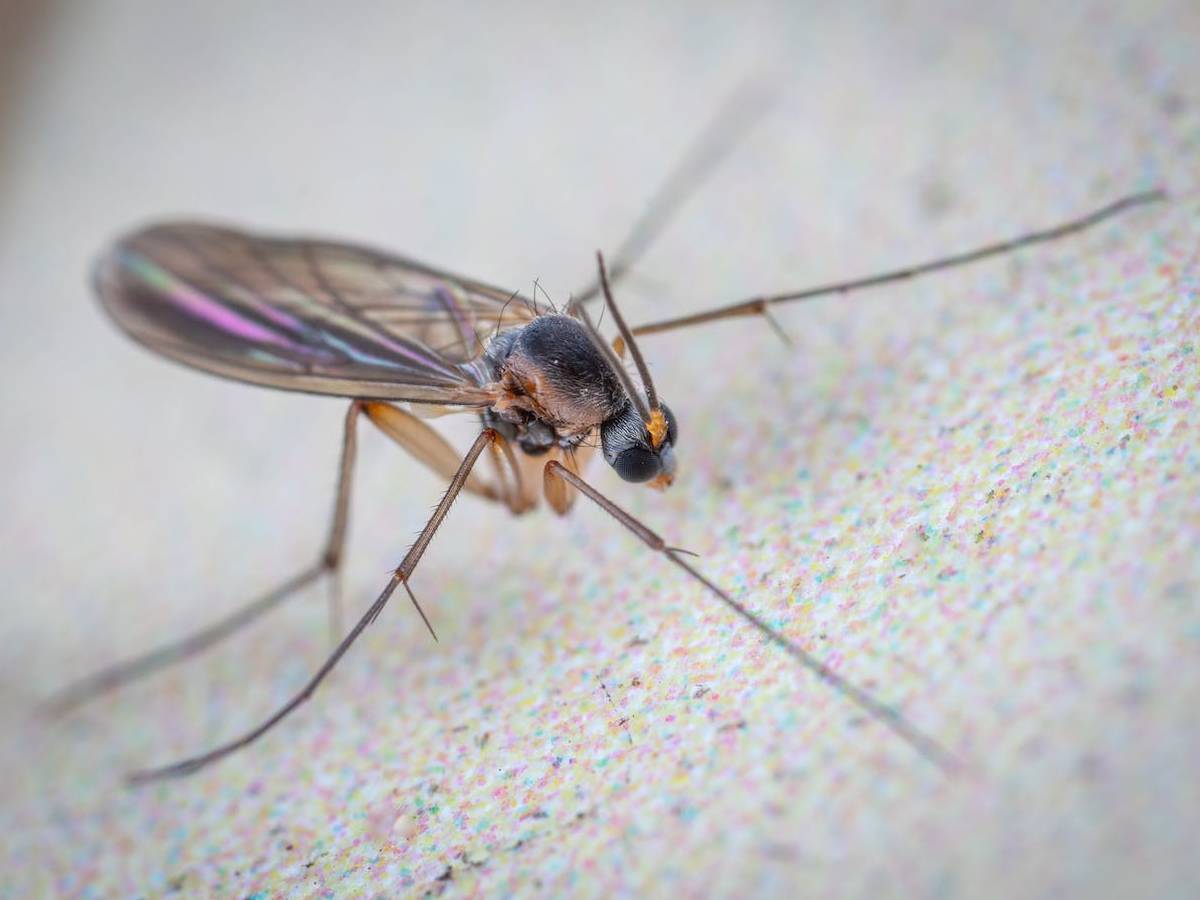Gnats are particularly annoying to deal with because of their extremely small size and ability to fly. You would understand what we mean if you had ever met them. They never stop flying over your head. They merrily buzz as they circle your mouth, nose, and eyes.
They are extremely skilled flyers, but they are also so small that it is very difficult to capture them. They appear to always be one step ahead of people. They are even tinier than mosquitoes and flies.
Small flying pests such as black flies, crane flies, and midges are collectively referred to as “gnats”. Mosquitoes are sometimes even referred to as gnats. Generally, the gnats we find in our homes are of the non-biting variety, but they can also be biting ones. The summer months usually see a high concentration of these insects because they are drawn to moisture and organic matter.

As usual, the first and most crucial step in gnat control is learning to recognize them. You can eliminate them by being aware of their appearance, habits, behaviors, and hiding places.
Despite the fact that gnats are among the most annoying insects on the planet, their benefits are sometimes forgotten in the midst of their swarming. Bats and larger insects as well as birds eat gnats.
Additionally, gnats are important to the environment because they facilitate pollination, which is a natural process that promotes the growth of crops, flowers, and agricultural areas.
Gnats are not very dangerous, but they can be bothersome when they’re in the wild. But as soon as they get inside your house, they turn into a pest that has to be eradicated. They have the potential to infest your house and endanger your family’s health.
Gnats come in a variety of species, all of which are categorized by science under the Order Diptera. They usually occur in clusters and are incredibly small in stature. Gnats are particularly fond of potted plants because they are drawn to moisture and decomposing organic matter.
They look for moist places to breed because they offer food and cover. Gnats can be found thriving anywhere there are conducive conditions, such as garbage disposals, trash cans, and areas with overripe fruits.
Gnats eat a wide range of different things, depending on the species. Gnats have been seen consuming blood, fungi, plants, aphids, scales, and other insects in the wild.
They will consume food crumbs, fruits, vegetables, syrups, oils, grease, and houseplants when they are indoors. Because they are incredibly sly, gnats can flourish in areas with plenty of both food and moisture.
Male gnats swarm above streets and large fields when they are ready to breed. The swarms are called ghosts, and this usually happens near dusk. Depending on the species, female gnats will deposit their eggs either on land or in the water.
Gnats love to lay their eggs in potted plants outside or in overwatered houseplants. As they grow, the young will prosper from the excess moisture and decomposing plant matter.

Gnats are tiny, long-legged, flying insects. They have six legs, antennae, and one pair of wings. With transparent, membrane-covered wings, they are usually gray or black in color.
They are easily swatted or slapped due to their weak flight, but when dealing with an infestation, their sheer numbers can be overwhelming. The majority of the time, gnats are seen in groups, particularly during mating swarms.
Many different kinds of tiny, two-winged flying insects are referred to as gnats and are known to infest homes across the United States. The following four gnats are among the most prevalent ones you might have in your home:
Drain Flies: These gnats, also called moth flies, resemble tiny moths and are frequently fuzzy and gray in appearance. The drains in your house are the ideal habitat for them because they are drawn to extremely moist areas that contain organic, decomposing solids.
Fungus Gnats: When homes have indoor potted houseplants, these gnats are frequently discovered there. Usually, they infest soil or potting mix that has any amount of organic matter that is decomposing. They do not harm people or plants, but if they are not removed right away, they may become an annoyance.
Fruit Flies: As suggested by their name, these gnats are primarily drawn to ripe, rotting, or decaying fruit, but they can also be attracted to sweet, fermented liquids like wine and beer. Given that fruit fly eggs can hatch in as little as 24 to 30 hours, an infestation can spread quickly.
Black Flies: Small black flies can bite people, animals, cattle, and poultry. They are between 5 and 15 mm in size. They must draw blood to survive, just like mosquitoes, which is why people worry that they could spread illness. In actuality, despite the fact that their bites hurt, there is no proof that they spread illness.
Midge: These gnats, which are easily identified by their long legs, are frequently found outside in yards close to bodies of water. If you’re not careful, they could enter your home. They can be bothersome to have buzzing around your property, especially in the spring and summer when they tend to congregate in big swarms.
Gnats enjoy organic materials and moisture. Their brief lives are devoted to locating food sources and mating grounds. They are drawn to rotting fruit or leaves that have fallen, as well as moist spots within homes like wet potting soil and sinks and drains. On the other hand, whether they are fresh or rotten, fruits and vegetables will draw fruit flies.
They also enjoy human tears, perspiration, nasal mucus, body heat, and carbon dioxide emissions. In addition, they enjoy sweet-smelling hairspray, detergents, and lotions and perfumes.
And lastly, light attracts them. They must approach light sources like lamps and light bulbs because they have poor night vision.
Gnats are an unwanted and bothersome part of nature. You’ll have to figure out a way to handle them in the spring and summer, though, if you want to enjoy the great outdoors.
Use a natural gnat repellent, put on sunglasses, or wear a hat to achieve this. You can avoid these annoying insects on your hike or picnic by taking precautions. Take a look at one or more of these ideas to help you avoid getting irritated.
Apply a small amount of oil to your skin to deter gnats from flying toward you. To repel gnats, you can use almost any kind of cooking oil. Pick vegetable, coconut, or olive oil, for example.
After that, dip a cotton ball into the oil and apply it to your neck, behind your ears, and across your forehead. The gnats are less likely to notice you because the oil hides your scent from them.
Gnats adore fragrant body sprays, deodorants, lotions, and creams. Try not to use these products outside to keep them out of your face.
To keep gnats out of your garden and home, try essential oils like peppermint, lemongrass, lavender, tea tree, and eucalyptus.
The following advice will help you get rid of gnats in your area:
Usually, the population of these tiny flying pests is the first indication of a gnat infestation. Gnats, however, are difficult to identify because there are thousands of species.
For precise identification of the insects and effective treatment of the entire gnat infestation, including the larvae, it is best to get in touch with your pest control professional. For expert gnat control and treatment, get in touch with Titan Pest Services right now!
The Titan control team is prepared to assist you in getting rid of pests so you can enjoy your indoor and outdoor space risk-free and irritation-free. Our highly qualified technicians can assist you as well. We have successfully kept many families free of pests.
Being the most reputable company in America for both indoor and outdoor pest control, Titan Pest Services takes great pride in its work. We provide dependable and high-quality services.
For all of your pest control requirements, don’t hesitate to contact Titan. Every residential and commercial property deserves the best maintenance possible, in our opinion. No task is too big or too little. Thus, get in touch with us right now if you’re looking for naturally based pest control solutions!